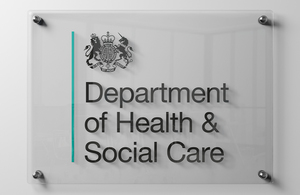NHS Pension Scheme proposal – what it means for doctors
The global economic situation has changed since 2008 and finances, both public and private, are under pressure. The Hutton Review said that …

The global economic situation has changed since 2008 and finances, both public and private, are under pressure. The Hutton Review said that current public service pensions are unsustainable. Reform is necessary as people live longer than previous generations.
Here we explain what the proposed NHS pension deal means for doctors:
- Pension reform is required because people are living longer. Today, a 60-year-old doctor retiring can expect to enjoy 29 years of retirement. This means drawing a pension for almost the same time as they worked for the NHS - 36 years. In contrast, a doctor retiring at 60 in 1984 could only expect to enjoy 20 years of retirement. Both would have paid similar amounts for their pension but the extra 9 years would cost approximately £440,000 and the extra cost is picked up by the taxpayer.
- The 2008 reforms to NHS pensions are not enough. Despite raising the pension age to 65 for future members, the 2008 reforms did not allow the costs of increases in longevity to be managed fairly or sustainably. The agreement allowed members to remain in their existing arrangements with a pension age of 55 or 60, despite the improvements in longevity from which they had benefited. Future generations of NHS workers and taxpayers would have to pay for the increasing time existing pension scheme members can expect to spend in retirement, with only a limited contribution made by members in the form of higher contributions before retirement.
- The current scheme is not financially sustainable. The Government pays pensions from the public finances. Currently, the contributions received into the NHS pensions scheme are greater than the cost of benefits paid out to retired members, creating a £2 billion positive cash flow that some describe as a ‘surplus’. All this means is that the cost of future pension entitlements being built up is greater than those being paid out at the moment. It reflects the fact that the size of the NHS workforce has been growing over the last decade. It does not mean that the scheme is financially sustainable. The current gap between contributions made and benefits paid out is set to disappear by 2016 as NHS workforce growth reaches a plateau and a generation of members reach retirement.
- The reforms still provide an excellent pension. The current NHS pension scheme provides the average full time consultant retiring at 60 with a pension of over £43,000 a year for life and a tax free lump sum of around £135,000. Compare this with a newly qualified doctor joining the reformed scheme after 2015. He can expect a pension of over £53,000 at age 65 (the normal pension age for new joiners) or a pension of around £68,000 a year at his state pension age of 68.
- Doctors’ pensions will still be **amongst the highest in the public sector.** They will also be significantly higher than the vast majority of the working population. The average NHS pension is around £7,300 a year.
- The NHS pension scheme will remain one of the best available. An inflation-proof pension of £68,000 a year would require a pension pot of nearly £2 million in the private sector. Most taxpayers will have to work longer and contribute more for their pensions with no hope of getting benefits as good.
- Most staff do not have to work until their state pension age in order to get the same level of pension expected under existing arrangements. For the same pension and lump sum, the average 40-year-old consultant would only need to work an extra two and a half years and a 24-year-old doctor starting out on their medical career a little after the age of 66. Those who can expect to live longer are being asked to work longer.
- Higher paid NHS staff do not pay an unreasonable amount for their pension. Doctors contribute a similar proportion of their salary as other NHS staff on much more modest incomes but usually achieve better benefits. Tax relief on pension contributions means that from April 2012, a consultant earning over £110,000 would contribute 6.54% of their salary after tax relief (9.9% before tax relief) whilst a nurse earning a quarter of that would pay 6.4% after tax relief.
- Those closest to retirement will see no change. All NHS staff within 10 years of their pension age will remain in the current scheme. Limited protection will be provided to staff who are outside this group but within 13.5 years of their pension age. This means around 35% of the NHS workforce will see no or little impact on their pension arrangements. All staff will have the pension that they have accrued by 2015 fully protected.
- Pension reform affects all public servants not just NHS staff. Pensions are one element of wider remuneration packages that, of course, vary between different sectors. For example, the average salary of a civil servant is around £23,000 a year, for a nurse it is around £31,000 and for a secondary school teacher £36,000. Civil servants pay a lower contribution rate towards their pension compared with other public servants. However, pay levels for civil servants have always taken this into account.